Willie Wagtail > nesting & juvenile | water | mixed company |
The Willie Wagtail (Rhipidura leucophrys), also spelt Willy Wagtail is the largest of the group of Australian fantails, that are often seen flitting about, whilst constantly wagging the tail feather from side to side. Always on the move, the Willie Wagtail are rarely seen staying in one place for more than a few moments during daylight hours.
The willie wagtail are usually seen either by themselves looking for insect prey or in pairs. During the good times, they may gather in small groups.
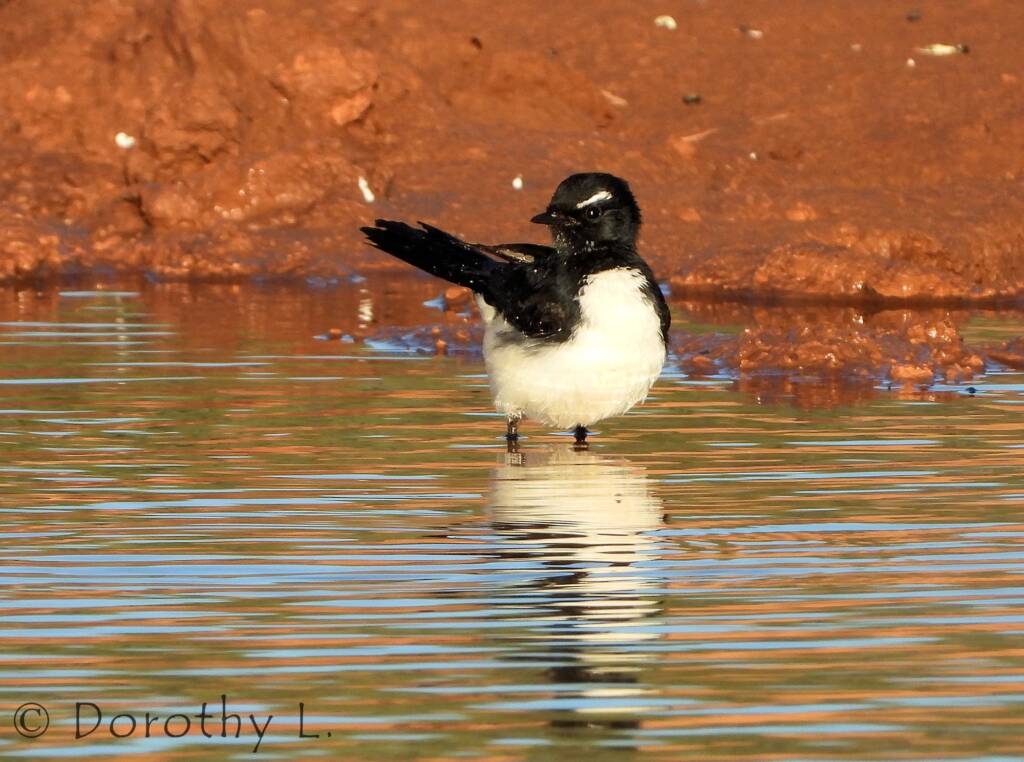
A black and white songbird with a fine bill and long legs, it is black above, white below, black throat, narrow white eyebrow and whisker marks. The young birds look similar to the adult, but with a paler look and with a slightly rusty edges to the wing feathers.
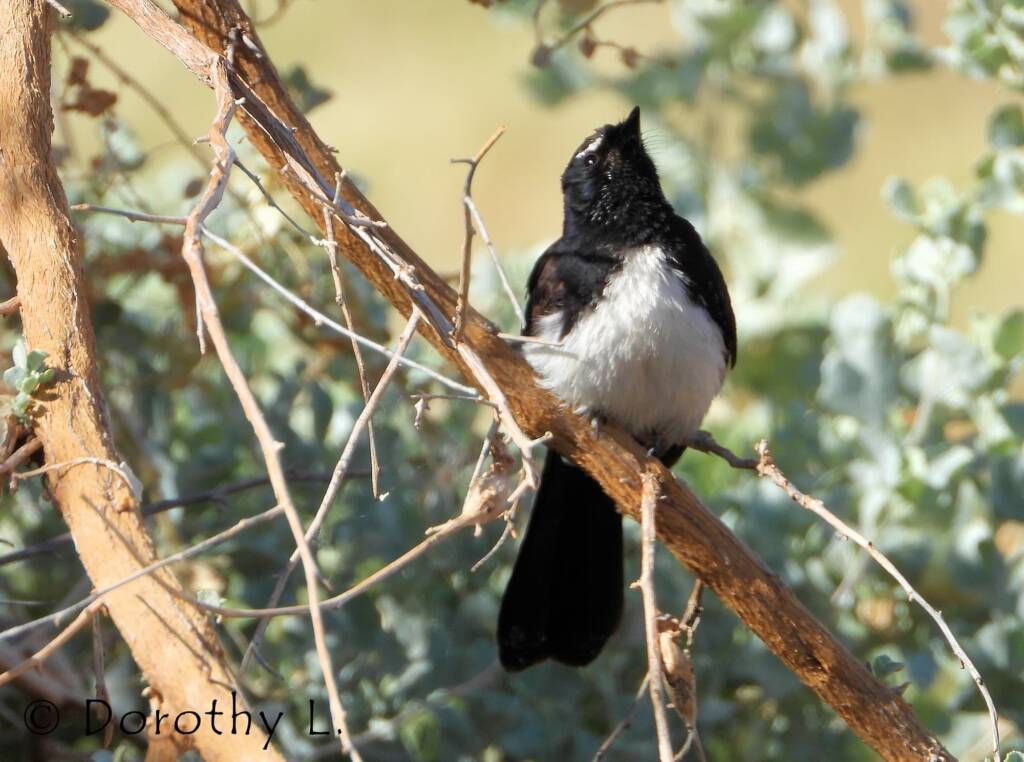

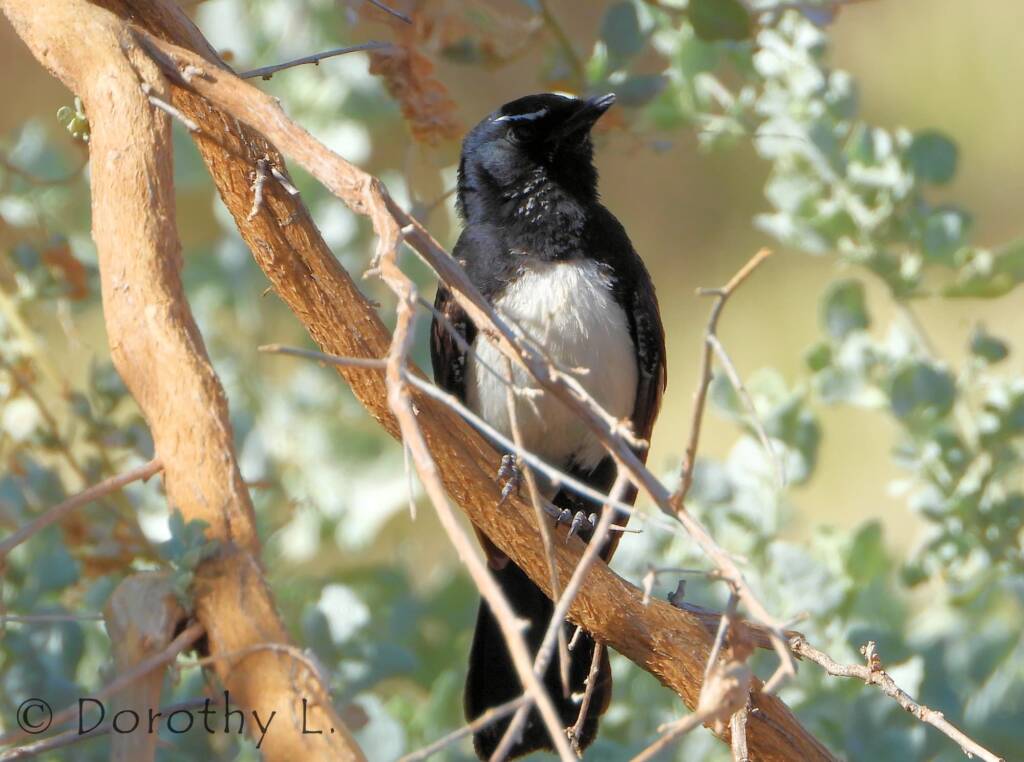

Whilst the male and female Willie Wagtails are identical in appearance, with no noticeable difference in size between them, it is their behaviour that provide some insight into their sexes, with the male likely to be more aggressive and territorial. The distinctive white eyebrow of the male wagtail appears to be part of the plumage for attracting a female, with rival males showing their aggression by expanding their eyebrows, especially during territorial disputes. The male will call more often then the female.
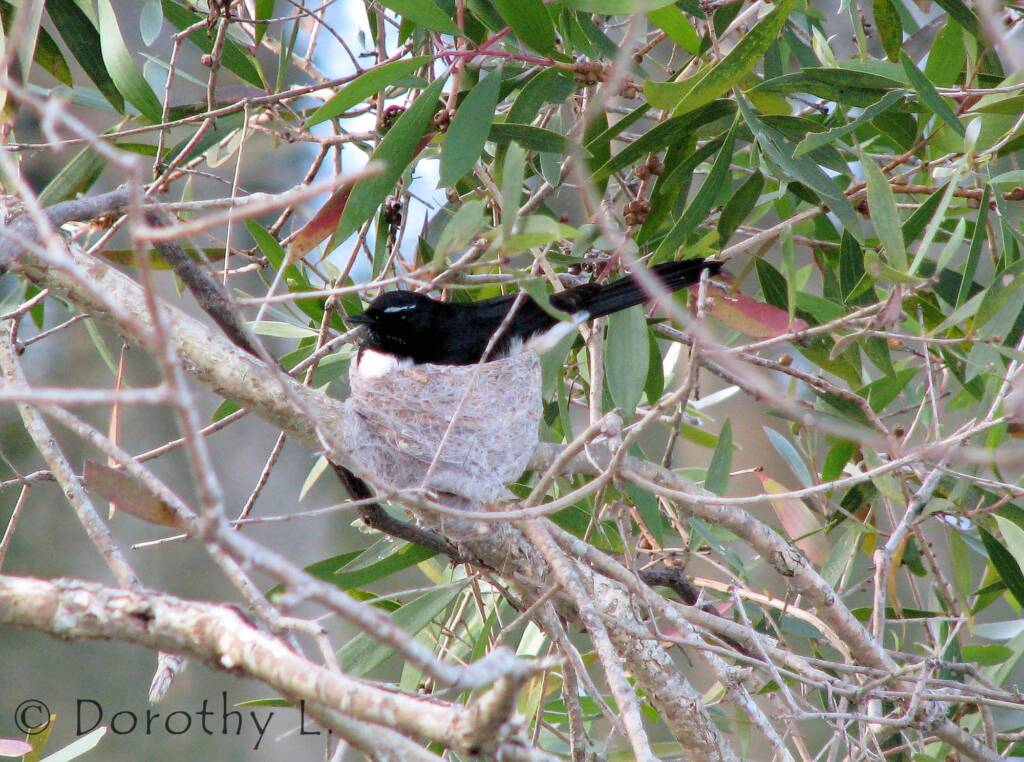
Willie Wagtails mate for life, with both parents raising their young together. Their nest is made of tightly woven grasses, resting on horizontal branches of tall shrubs and trees. Quite intricate, the nest are made to survive multiple season. They are often lined with soft layers of fur, hairs, and may even be covered in spider webs for strength.
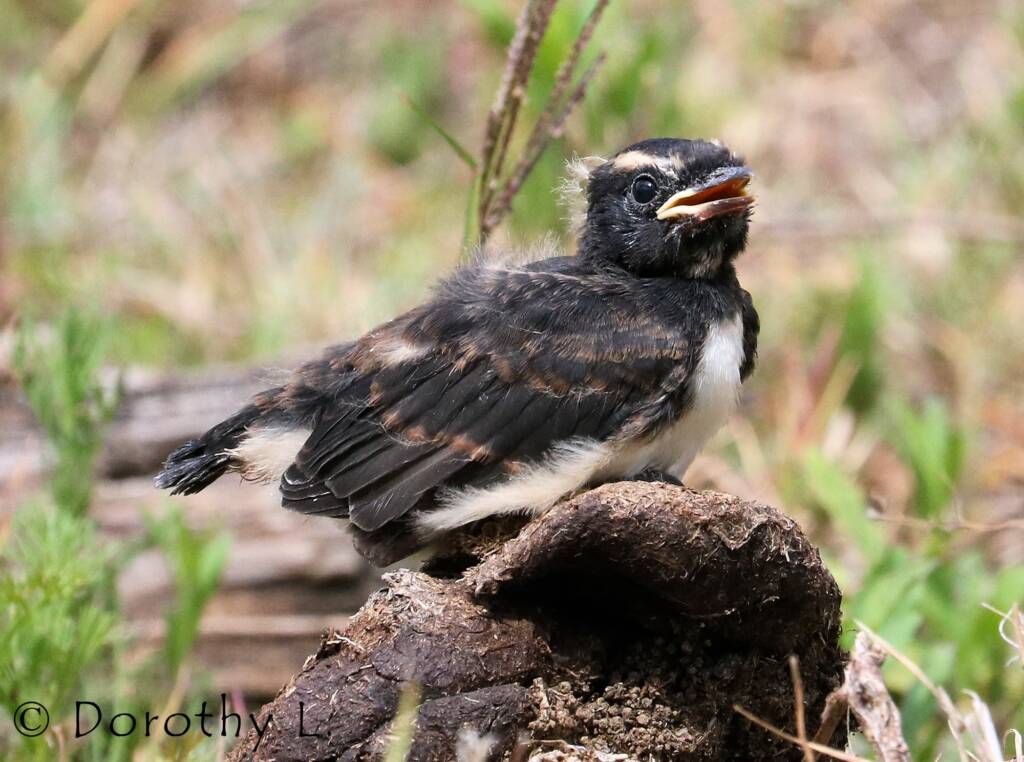
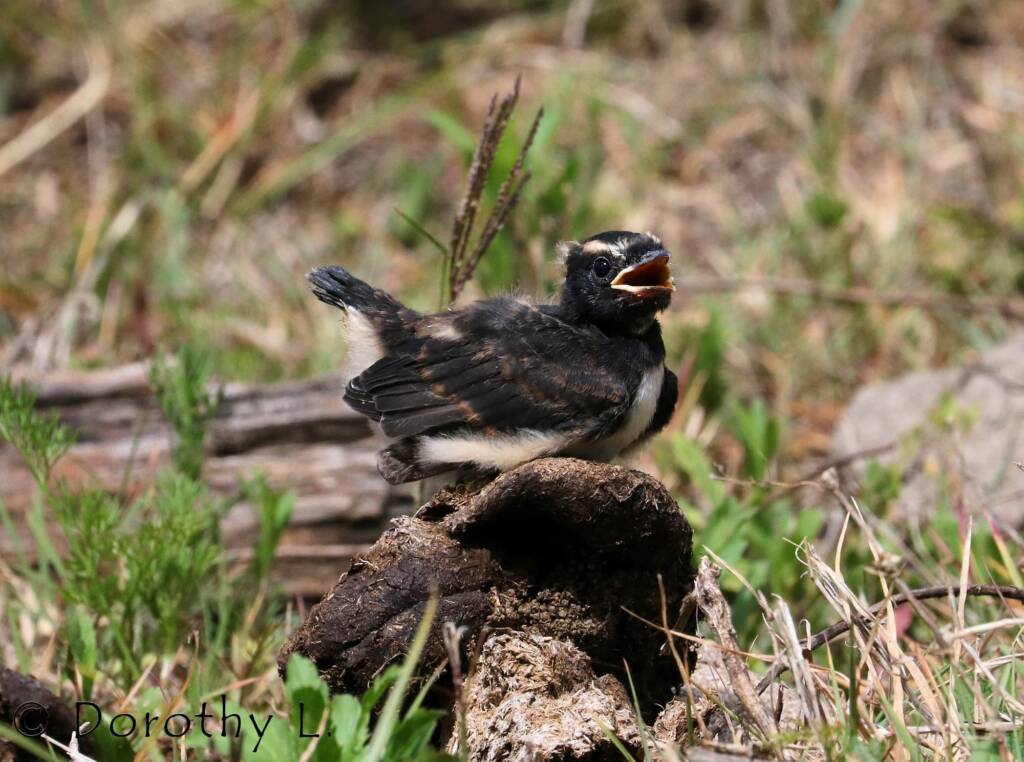
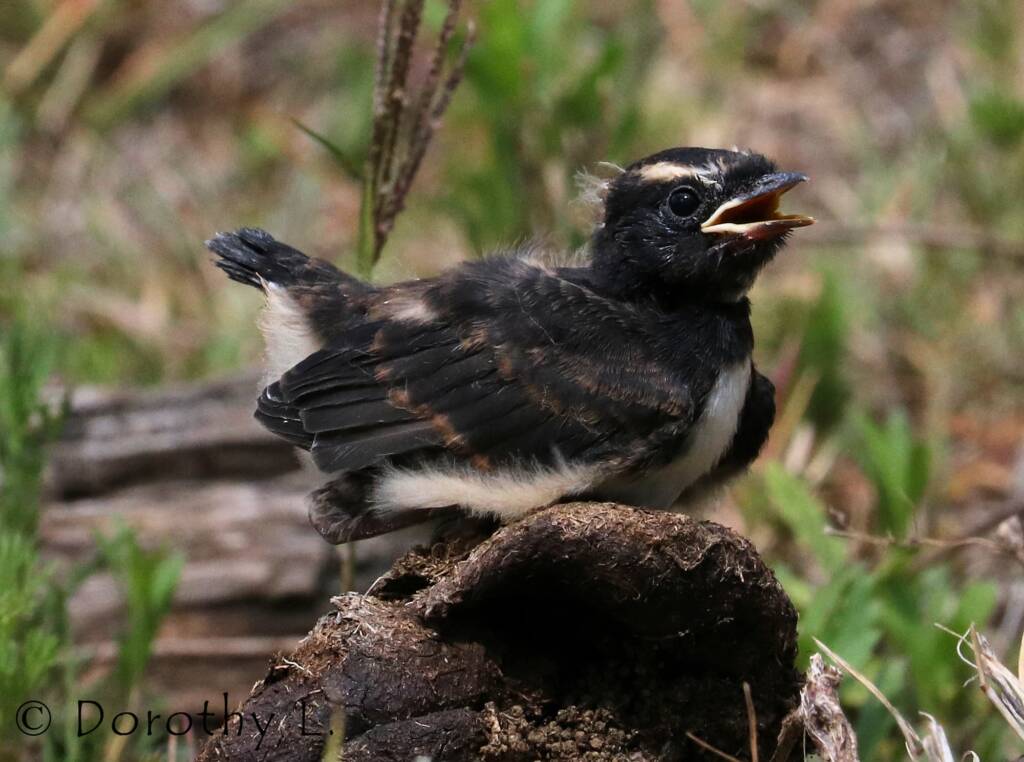
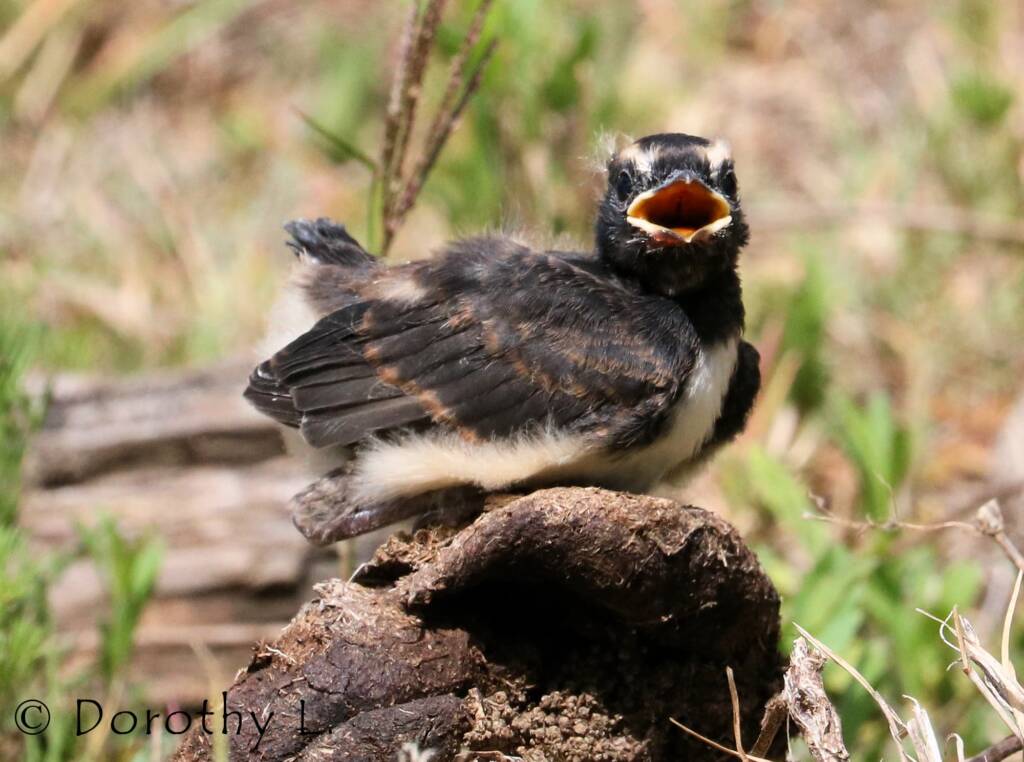
A cheery looking bird, with their constant movement a pleasure to watch, they are found in varied habitats of farmland, town and city parks, grassland and even in semi-arid regions of Australia, especially where there is food and water.
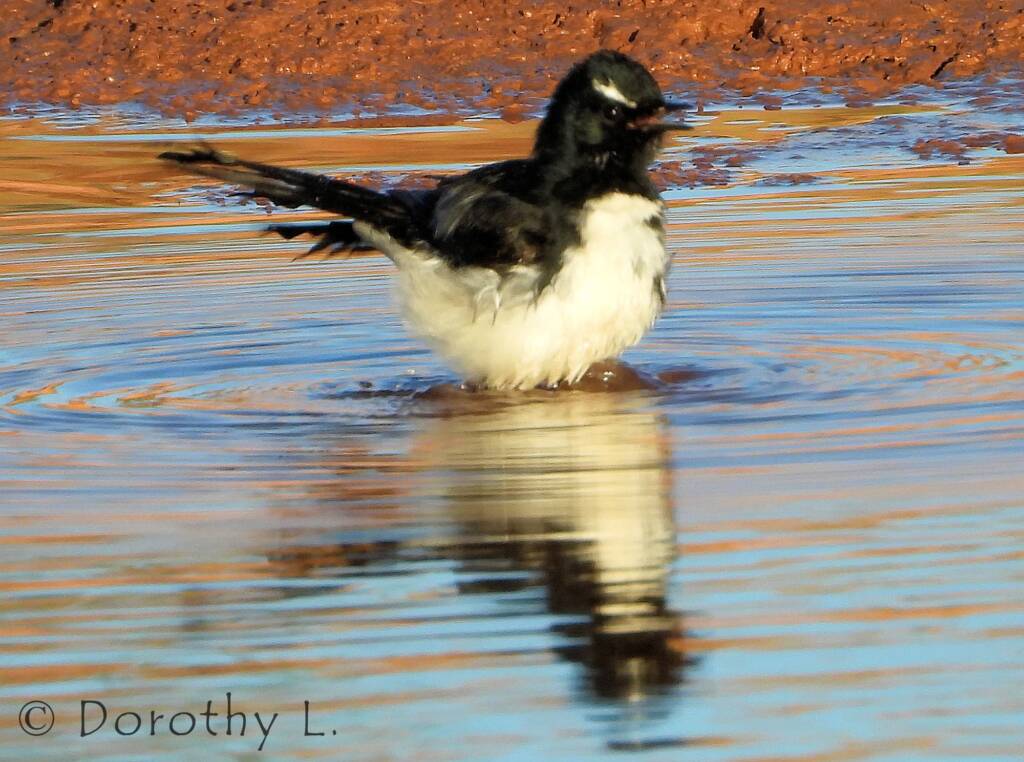

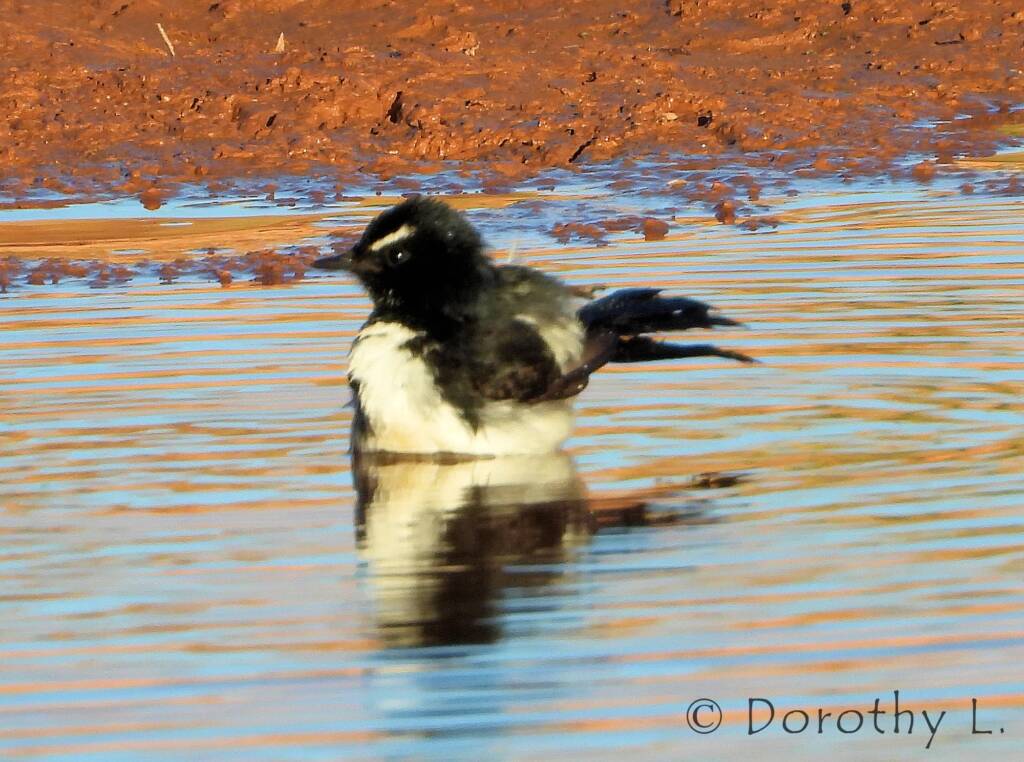
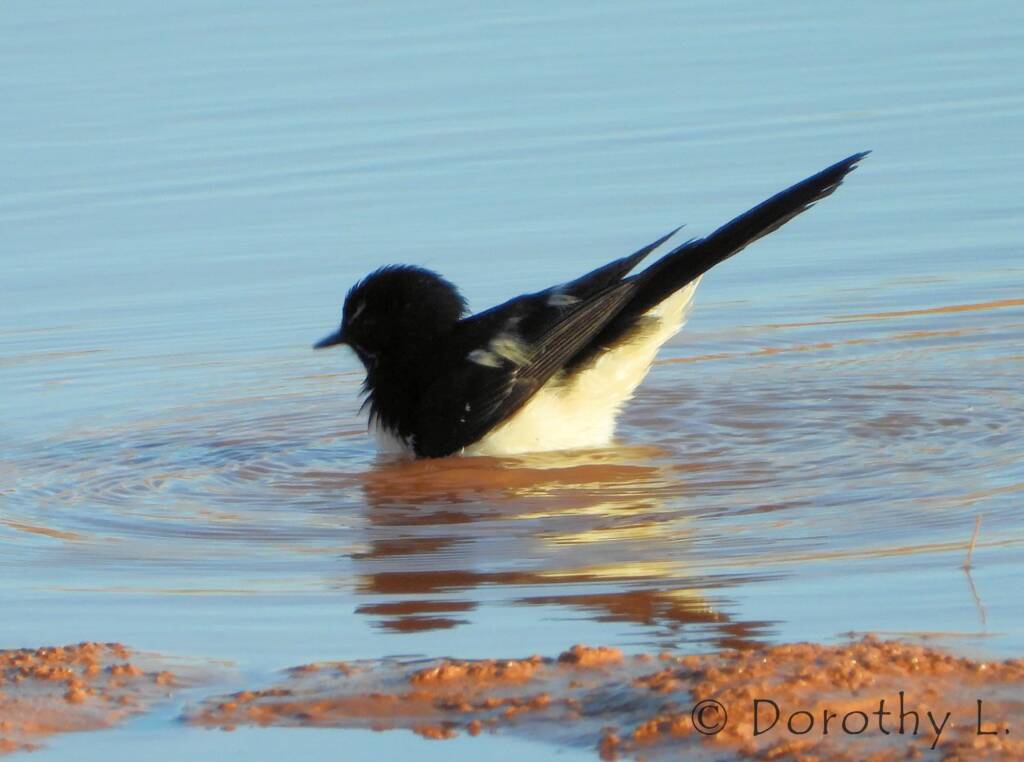
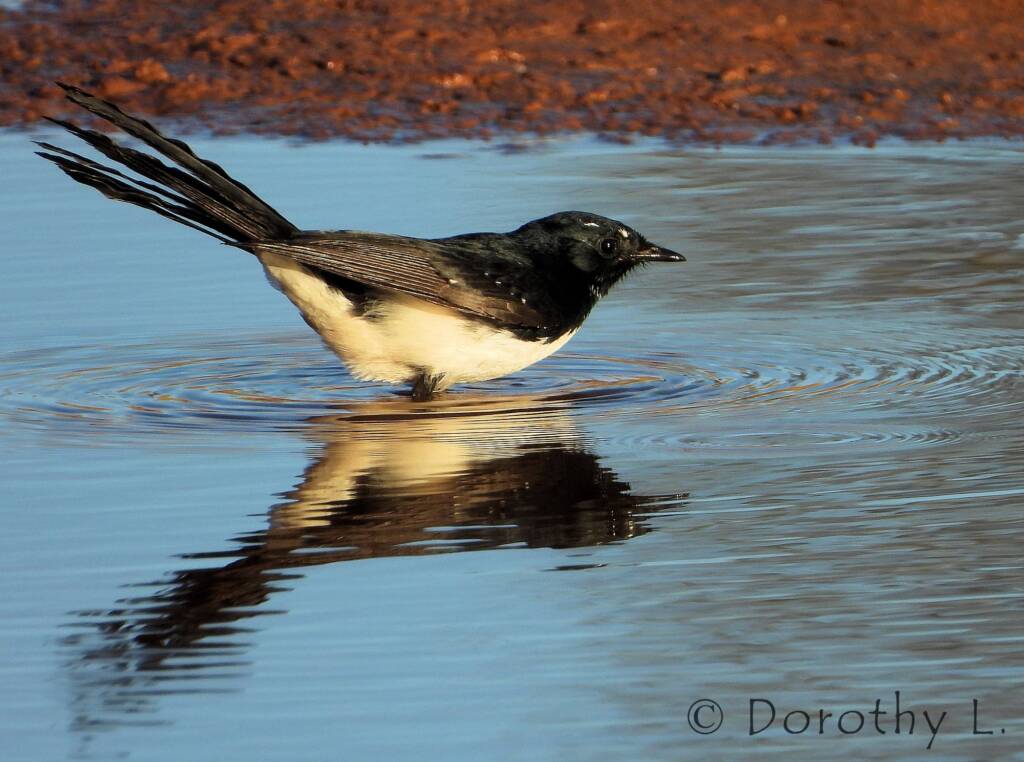
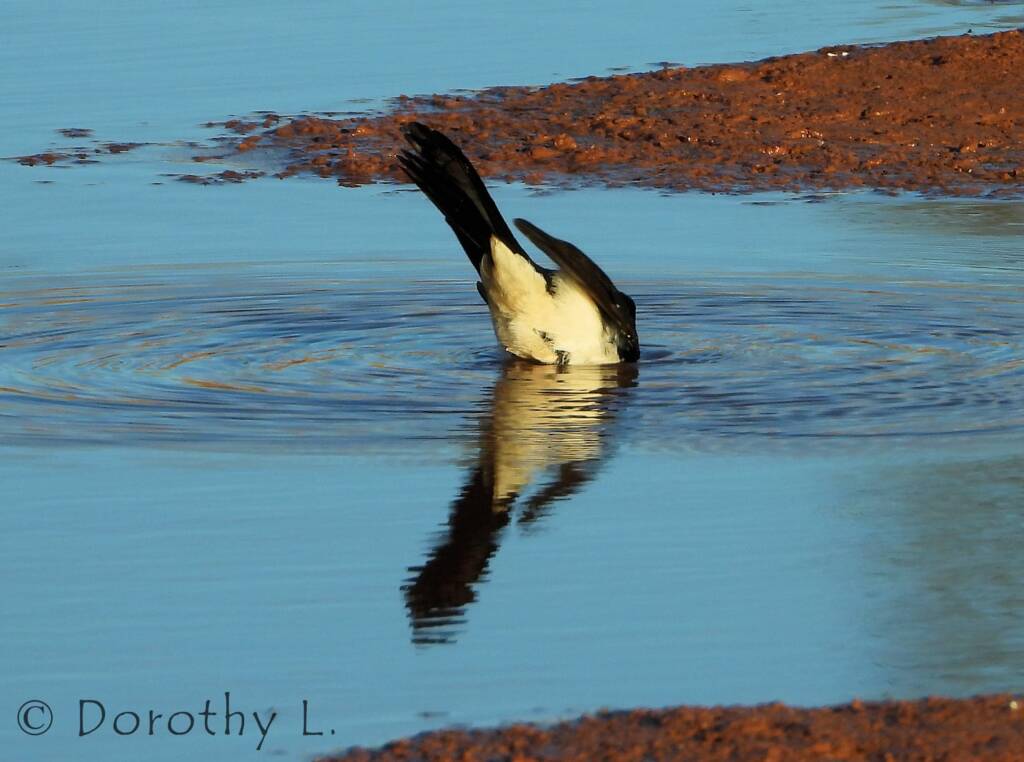

Common name
Known as the Willie Wagtail, it has also been spelt as Willy Wagtail, Willy Wag Tail.
The Indigenous Australians feature in a number of beliefs and stories across Australia. The Ngarrindjeri of the Lower Murray River, and the Narrunga People of the Yorke Peninsula in the south-eastern part of Australia regard the Willie Wagtail as the bearer of bad news. They were considered gossipers, who would eavesdrop around the campsites. In the Kimberley region of Western Australia, the Aboriginal stories is that of the birds telling the spirit of the dead, if anyone spoke badly of them.
The Kunwinjku people in western Arnhem Land regarded the Willie Wagtail a liar and a tattletale. Whilst in the dreaming story of the Yindjibarndi people of the central and western Pilbara, the willie wagtail said to have stolen fire and tried to extinguish it in the sea and was able to send a strong wind if frightened.2
At Uluru-Kata Tjuta National Park the Tjukurpa tells how tjintir-tjintirpa (willy wagtail) hears faint sounds of singing and realises that the ceremonies of the Mala (rufous hare-wallaby) people have started. To show how pleased she is, she smiles and forms Ikari, a cave near Mutitjulu Waterhole where you can still find willy wagtails today.3
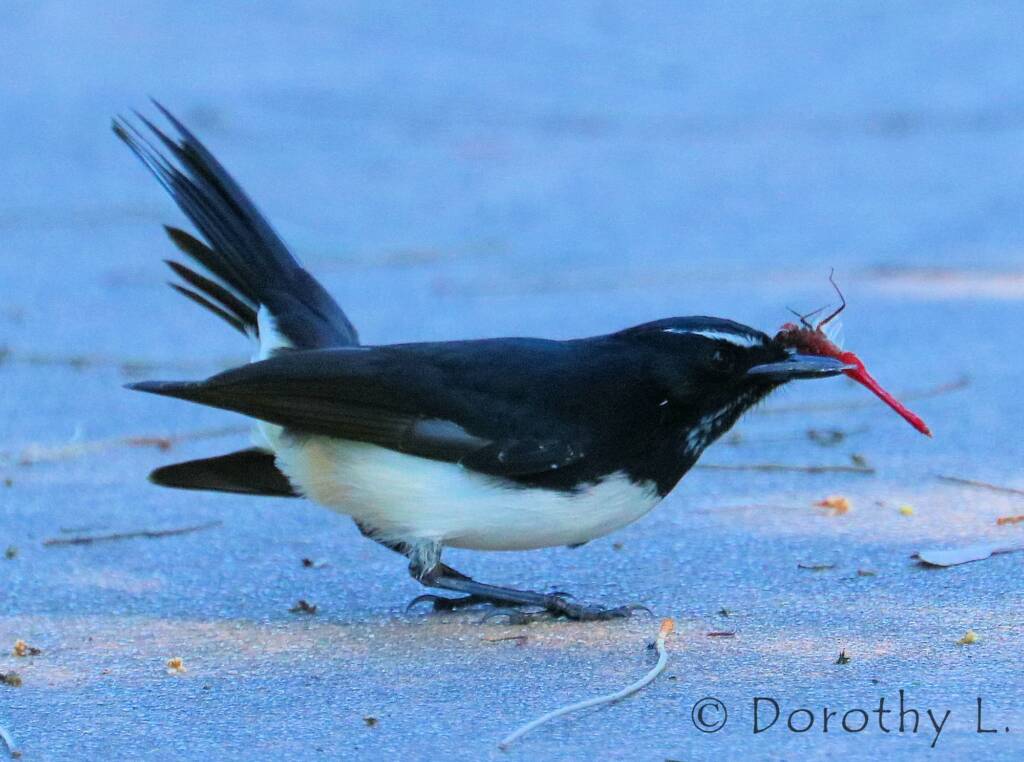
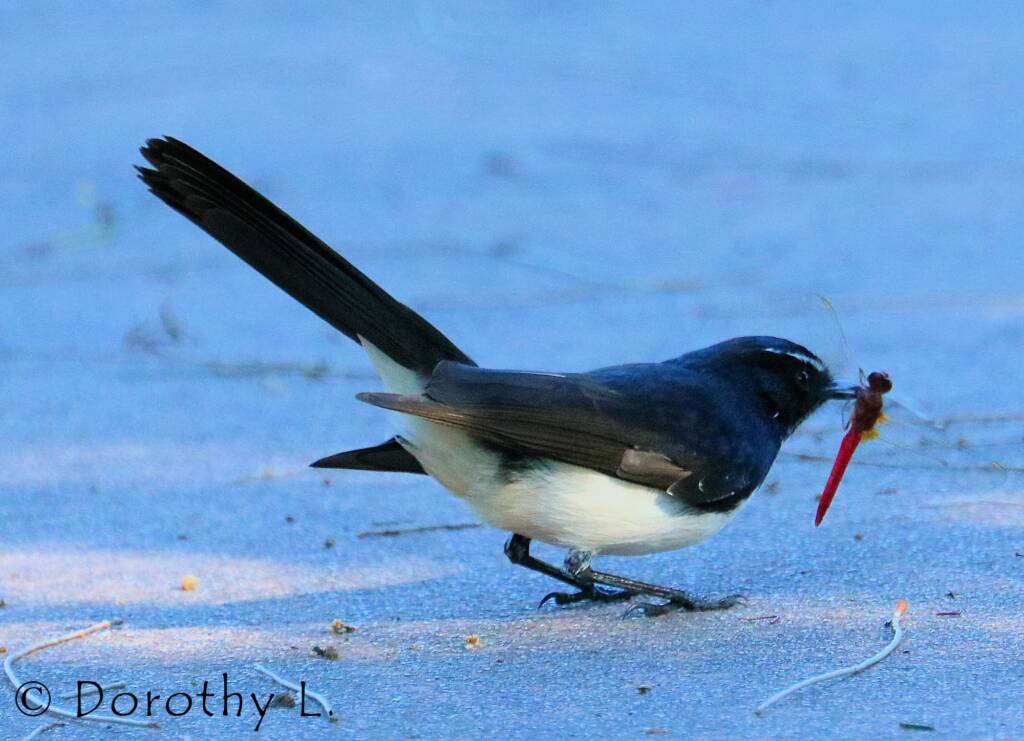
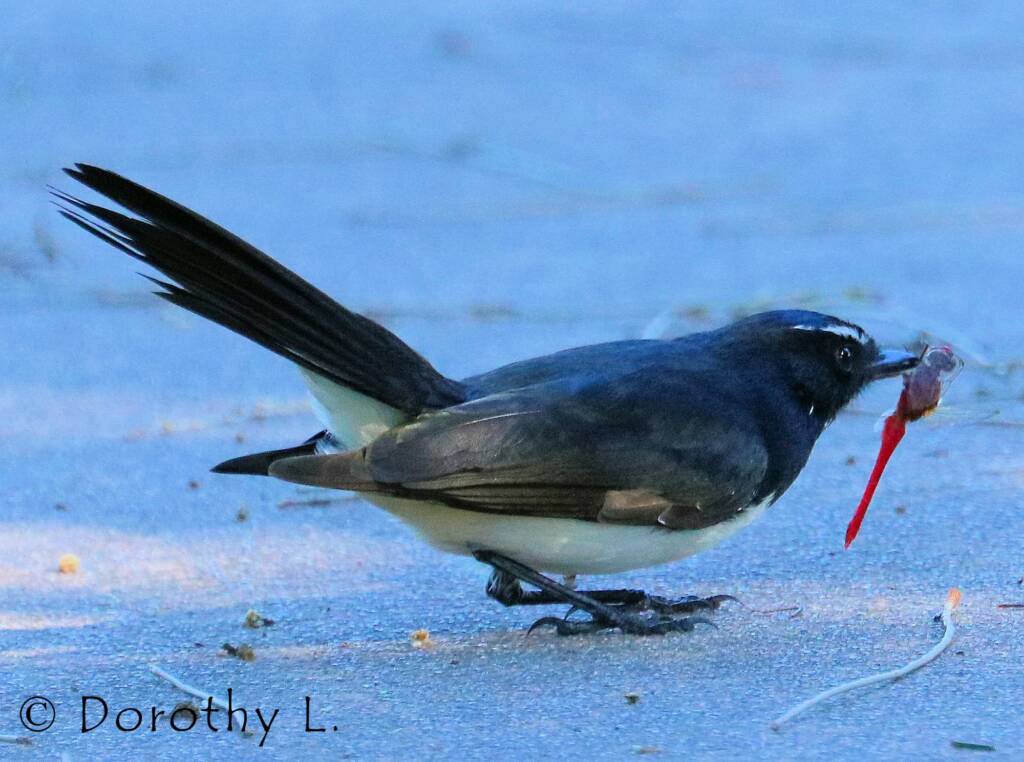
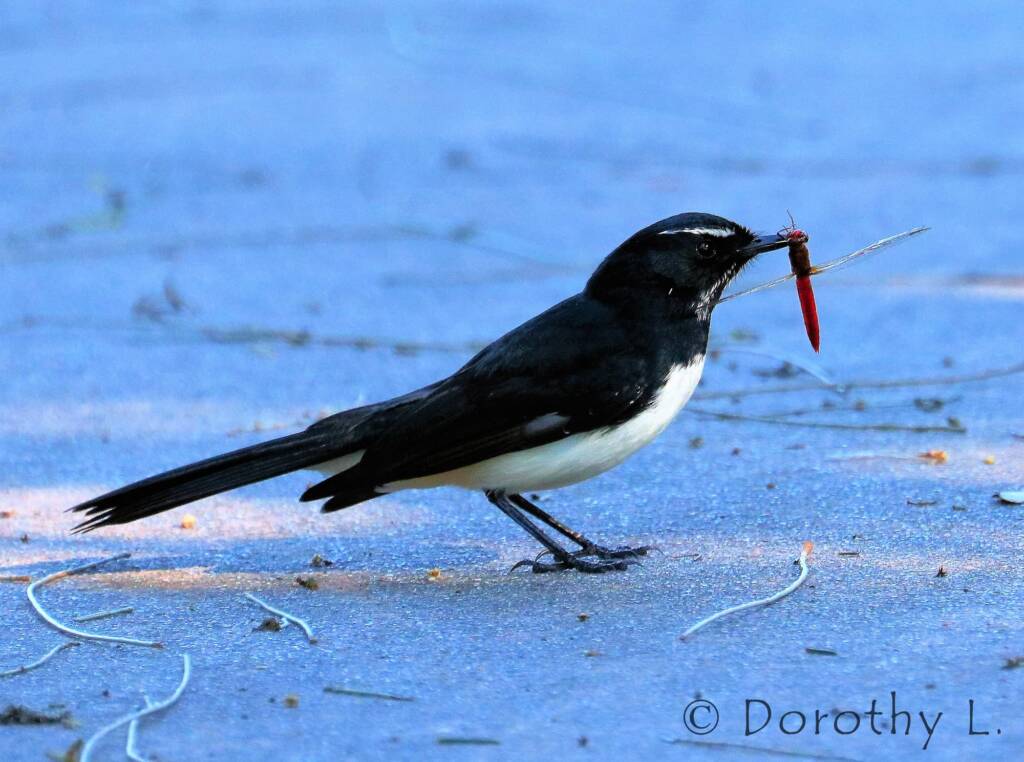
Images © Dorothy L
Birds | Willie Wagtail | Willy Wagtail (more images)
- Scientific classification
- Kingdom: Animalia
- Phylum: Chordata
- Class: Aves
- Order: Passeriformes
- Family: Rhipiduridae
- Genus: Rhipidura
- Species: R. leucophrys
- Binomial name: Rhipidura leucophrys
- Subspecies:
- R. l. leucophrys
- R. l. melaleuca
- R. l. picata
Footnote & References
- Willie Wagtail, BirdLife Australia, https://www.birdlife.org.au/bird-profile/willie-wagtail
- Willie wagtail, https://en.wikipedia.org/wiki/Willie_wagtail (last visited June 9, 2021).
- Willy wagtail, Uluru-Kata Tjuta National Park, https://parksaustralia.gov.au/uluru/do/birdwatching/willy-wagtail/
- Willie Wagtail, Canberra Birds, Canberra Ornithologists Group, http://canberrabirds.org.au/our-birds/canberra-garden-birds/fantails/willie-wagtail/
